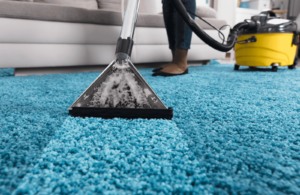Window replacement is a major project that can disrupt day-to-day home life. That’s why it’s important to work with an experienced company that specializes in this type of installation.

Window frame material affects everything from heat transfer to maintenance tolerance. Look for a frame that matches your house’s aesthetic while aligning with your budget, climate and maintenance expectations. Visit Website to learn more.
Energy efficiency is a primary consideration for homeowners who are considering window replacement. New windows are designed to be more efficient than older models, reducing energy waste by allowing fewer air leaks and providing better insulation. Additionally, by replacing old single-pane windows with new Energy Star windows, you can save up to $366 per year on heating and cooling costs, according to the Environmental Protection Agency (EPA).
In order to maximize your energy savings, it’s important to choose a window type that suits your home’s needs. The most common types of windows include double-hung windows, sliding windows and casement windows. Double-hung windows are the most popular because they can be opened and closed with ease, letting in more fresh air and offering unobstructed views of your outdoor space. Sliding windows are similar, but they sit on a track and open from the left or right side without requiring the use of a ladder or stool. Casement windows open outwards with hinges like doors and are available in a range of sizes and materials.
Choosing the right window frame material is also key to energy efficiency. Vinyl is a popular choice because it’s durable, low-maintenance and affordable. Wood frames, on the other hand, are typically more expensive and can be more difficult to maintain, especially if they’re exposed to sunlight or humidity on a regular basis.
When choosing a window, make sure it meets the ENERGY STAR criteria and has received a rating from the National Fenestration Rating Council (NFRC). These ratings indicate how much energy a window consumes, as well as how much heat it retains or loses. A higher NFRC rating means that the window is more energy-efficient.
There are two options for installing window replacements: full frame and pocket windows. A full frame replacement involves removing the existing window, including the frame, and then installing a new window. This is the more invasive option, but it’s necessary if the existing window sills and surrounding trim are rotting or damaged. Pocket windows, on the other hand, install into the existing frame and don’t require any removal or demolition of the surrounding trim.
Aesthetics
Window replacement is not just a practical and energy efficient solution; it also improves the overall aesthetic of a home, adding beauty and charm. The wide variety of colors, designs, and materials available ensure that homeowners can achieve the look they desire. The aesthetics of your home are a reflection of your personality and style, and windows are an important part of that picture. This guide delves into how window size, design, and frame material affect the overall aesthetic of a house.
Windows are one of the first things that draw attention to a home, so they have a huge impact on curb appeal. Old, mismatched, or damaged windows can detract from a house’s appearance and make it less appealing to onlookers. Replacing these old and outdated windows with new ones can drastically change how your home looks and create a positive first impression for those who visit.
Besides making your home look newer and more attractive, windows can alter the amount and quality of natural light in rooms, enhance views, and work as a design feature themselves. The best way to decide which type of replacement windows are right for your home is by consulting a professional who can explain the various options and recommend what would look best with your unique exterior design.
In addition to their aesthetic value, new windows can boost your home’s resale value and help you make a quicker sale. Potential buyers will be drawn to the beautiful, clean, and well-maintained look of your home, which is a good sign that it’s been cared for and is in excellent condition.
For those interested in aesthetics, there are many window options to consider that are designed to blend into different home styles and enhance the visual appearance of a residence. Clear glass provides unobstructed views and works well with contemporary homes, while frosted or tinted windows offer privacy without sacrificing natural light penetration. Window sash trim and accents can also be custom-designed to match your existing trim and siding, providing a seamless, cohesive aesthetic. Sidelites are also an option, allowing for an increased entryway and a greater sense of depth to the front door. These can be designed to complement your home’s architectural style or to use a neutral color for a more versatile look.
Durability
While window manufacturers design their products to last, the life of a home window can still be impacted by natural wear and tear, weather conditions and other factors. The good news is that if you take the time to perform routine maintenance on your windows, they can often last for a long period of time without needing replacement.
But even the best quality windows will eventually need to be replaced. If you’re not sure whether it’s time to invest in a new set, consider these warning signs that your windows may be due for replacement:
Visible Corrosion or Rust
Over time, the elements can weaken the insulating seams of your windows, which can result in poor performance and an increase in energy bills. To avoid this, look for visible signs of rust or corrosion around the locks, handles and hinges of your windows.
Soft Frames
Over time and exposure to extreme weather, your window frames can deteriorate, leading to serious damage and a need for replacement. If your frames are soft, cracked or chipped, it’s important to act quickly to prevent further damage and reduce the risk of water leakage and pest infestation.
Difficulty Opening or Closing
Windows that are difficult to open and close can be a significant inconvenience for you and your family. This problem is caused by the natural settling of your home or mechanical problems with your windows. Regardless of the reason, if your windows are unreachable or impossible to open or close, it’s time for a replacement.
Loose or Wobbly Parts
When hardware like locks and hinges become loose or wobbly, it’s an indication that they need to be replaced. This is not only a nuisance, but it can also compromise the security of your home and lead to air infiltration and drafts.
When you’re ready to replace your windows, consider a full-frame replacement option. This type of replacement uses the existing frame and sill of your home, but offers a more durable and long-lasting solution. Asher Lasting Exteriors offers a wide variety of vinyl and aluminum clad windows, which are designed to resist warping and are backed by a limited lifetime warranty.
Maintenance
Keeping windows clean and examining them regularly for any signs of damage or difficulty opening and closing helps prevent the need for costly repairs. This is particularly true of wooden frames, which are prone to moisture accumulation that can lead to mold, mildew and wood rot. If the frame is damaged, repainting is often necessary to keep it looking good and preventing water leaks.
Even a small crack in the window glass or frame allows air to move in and out of the home, driving up energy costs. This is why it’s important to fix any issues promptly.
Window replacement is often recommended for older windows, but repair is often an option too. Typically, replacing just the pane of broken window glass or a damaged frame is cheaper than installing a new window.
A window that is difficult to open, a draft or a cracked or chipped frame are all signs that it’s time for a new window. Replacing these with a new, more efficient model will not only improve energy efficiency, but it will also improve the aesthetics of your home.
The frames of replacement windows are made from a variety of materials, including metal, vinyl or aluminum. Metal and vinyl frames are easier to maintain, as their surfaces don’t require painting or staining. Wooden frames, on the other hand, need to be painted or stained regularly to protect them from the elements and prevent moisture damage.
Weather changes, normal wear and tear and the settling of your house can cause tiny gaps between different parts of your window. These can allow air and moisture to pass in or out of your home, increasing your utility bills and causing damage to the surrounding walls and floor.
It’s also important to inspect the exterior casing (the trim that surrounds your window) for rot, rust or damage. Loose, cracked, rotting or missing casing should be replaced with primed wood exterior casing, which is available at most home centers. Usually, this is a do-it-yourself project. However, if the existing wood casing has mold or mildew, it may be necessary to have a professional remove it and replace it.




